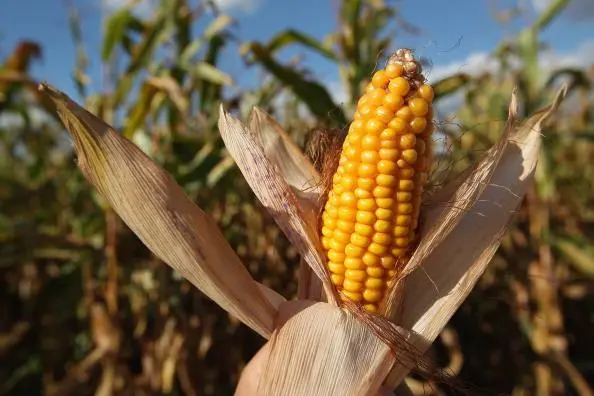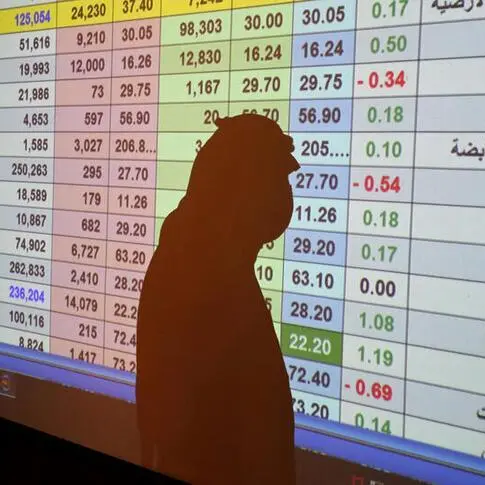PHOTO
CHICAGO - U.S. corn futures extended their rally on Friday, jumping to a four-month high, as forecasts of heavy rain sweeping a wide path across the U.S. Midwest next week fueled concerns about worsening planting delays.
Chicago Board of Trade (CBOT) corn prices rose for the fifth session, trading through its 100-day moving average - and also helped wheat extend its gains to a six-week high.
Traders said the wheat market also was reacting to worries that excess moisture could hamper sowing of spring wheat in the northern Great Plains, as well as potentially cause disease problems for the final growth stages of winter wheat.
Weather also drove soybeans lower. Corn seeding snags have raised the prospect that farmers will shift some areas to later-planted soy, while renewed tensions in U.S.-China trade talks have dampened hopes for a swift return to massive soybean shipments between the two countries.
Showers over the next 10 days are threatening to further slow planting from the Dakotas to Illinois, regions that have endured torrential rain this spring, the Commodity Weather Group said on Friday in a note to clients.
The delayed planting season across much of North America is starting to cause economic ripple effects along the farm supply chain. Executives at agricultural equipment maker Deere & Co on Friday warned that farmers are becoming "much more cautious about making major purchases," in part because of the weather impact on planting.
"It's weather and more weather," said Craig Turner, a commodities broker for Daniels Trading. "We could lose anywhere from 500 million to 1 billion bushels of corn because of the planting problems. We're coming into the weekend and a lot can happen, weather-wise."
As of 10:15 a.m. CDT (1515 GMT), CBOT July corn was up 4-1/4 cents, or more than 1%, at $3.83-1/4 per bushel, after reaching $3.84, its highest since March 29. CBOT July wheat was up 5-1/2 cents at $4.72-1/4 per bushel, after reaching $4.73-1/4, its highest since April 4.
July soybeans were down 8-1/2 cents at $8.31-1/4 a bushel.
The most-active corn contract on the Chicago Board of Trade was up just over 1% at $3.83 by 10:21 a.m. CDT (1521 GMT), after earlier touching its highest since Jan. 8 at $3.84. Over the week, the contract was up more than 9%.
New-crop December corn broke through the psychological $4 per bushel level, with futures prices hitting a high of $4.10 in midday trades.
The most-active soybeans contract was down 1.25% at $8.29-1/2 a bushel, but still on track to end the week on a positive note after rebounding from a 10-year low on Monday.
WEATHER WOES
Traders are anxious, too, to see the U.S. Department of Agriculture's next crop update on Monday to see whether farmers made much headway during relatively drier conditions earlier this week.
"We should see some of those acres shift to soybeans, but some of those acres will not be planted," said Brian Hoops, president of Midwest Marketing Solutions. "But, normally, USDA doesn't release data on prevented planting acres until August, so it could be months before we know how much acreage we're talking about."
Adding to the grain market uncertainty is what the United States would do with its massive stocks of soybeans, particularly if those stockpiles grow even bigger this year. The United States is likely to permanently lose soybean export market share in China the longer U.S.-China trade talks drag on, a top executive at the U.S. Soybean Export Council (USSEC) industry group said on Friday.
The weather problems and the planting uncertainty come at a time when commodity funds have built up massive net short positions in CBOT grains, leaving the markets vulnerable to bouts of short-covering, Hoops said.
Trader estimates of net fund buying in corn on Thursday ranged from 24,000 to 40,000 contracts. The following table reflects the average of estimates from trade sources
(Additional reporting by Gus Trompiz in Paris and Naveen Thukral in Singapore; editing by Richard Pullin, Louise Heavens and Jonathan Oatis)
© Reuters News 2019












